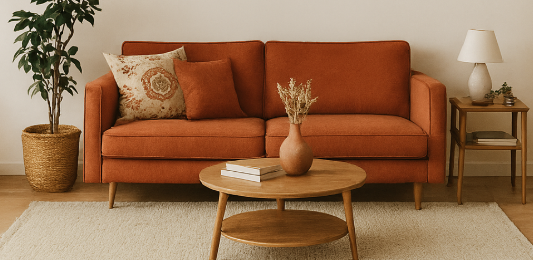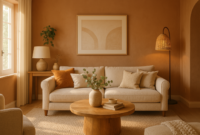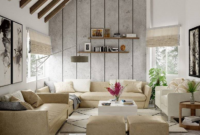Creative Touch in Arranging Your Home Space
Home is more than a place—it’s a reflection of your personality, creativity, and lifestyle. The way you arrange your home space speaks volumes about who you are and what you value. It’s not just about furniture placement or paint colors; it’s about creating an environment that resonates with warmth, functionality, and character.
In today’s world, where personal expression reigns supreme, the cookie-cutter interior design approach often falls flat. To truly make your house a home, infusing a creative touch in how you arrange your space can make a world of difference. In this article, we’ll explore the artistic, emotional, and functional elements of transforming your living environment, and how you can do it with flair—without breaking the bank.
1. Understand Your Space First
Before you rearrange furniture or buy new decor, take time to understand the flow of your space. Every room has a story to tell and a purpose to serve. Observe how natural light enters, where people gather, and how the room feels throughout the day. Is it cozy or cold? Spacious or cramped? Is the room serving its intended function?
Sketch out a floor plan, if necessary. Knowing the dimensions and limitations of your space allows you to think creatively within realistic boundaries. Measure doorways, wall lengths, and corners—these small details help prevent future design missteps.
2. Start with a Central Idea or Theme
One of the most effective ways to bring cohesion to a space is to build around a central idea or theme. Whether it’s “coastal calm,” “urban industrial,” “boho chic,” or even a favorite movie or era, having a guiding vision helps you make more intentional decisions.
Themes don’t mean you have to be literal or strict. You can adapt the aesthetic to fit your own sensibilities. For example, if you’re inspired by mid-century modern design, you might include clean lines and vintage wooden furniture but modernize it with contemporary art or smart lighting.
3. Let Color and Texture Tell Your Story
Color is a powerful design tool that can transform mood, depth, and energy within a space. Creative use of color doesn’t necessarily mean bold red walls or neon furniture. It could be as subtle as a mint green accent wall, colorful bookshelves, or navy-blue velvet pillows.
Similarly, texture adds richness and dimension to a space. Combine materials like wood, glass, metal, wool, and linen. A woven basket, a shag rug, or a velvet sofa can bring warmth and tactile intrigue. Don’t be afraid to mix and match textures to create visual interest.
4. Incorporate Meaningful Accents
Home arrangement is at its most personal when it includes items that hold meaning. Art you’ve made yourself, souvenirs from travels, family heirlooms, or even framed children’s drawings can add emotional resonance to a room. These aren’t just decorations—they’re conversation starters and memory anchors.
Create a gallery wall filled with personal photographs, favorite quotes, or unique art pieces. Shadowboxes, custom shelves, or a rotating display table can give treasured items their due spotlight.
5. Think Function + Aesthetic
A creative home isn’t just beautiful—it’s functional. Every item and arrangement should serve a purpose, whether it’s practical, emotional, or decorative. Invest in furniture that does double duty: storage ottomans, fold-out desks, modular sofas.
Consider how traffic flows through a space. Leave enough room to walk comfortably between furniture. If a piece gets in the way, reconsider its placement or remove it altogether. Creativity also means knowing when less is more.
6. Embrace Nature Indoors
Plants are a simple yet impactful way to add life, color, and calm to any space. They act as natural air purifiers and create a sense of groundedness. From large statement plants like fiddle leaf figs to low-maintenance options like snake plants or succulents, greenery can easily enhance the feel of a room.
You can get creative with how you display plants: hanging planters, wall-mounted gardens, repurposed jars, or tiered plant stands all offer stylish solutions. Try creating a mini indoor jungle or a herb garden in your kitchen window.
7. Maximize Natural and Artificial Light
Good lighting can completely transform a room. If your space lacks natural light, use mirrors to reflect and amplify what you do have. Position mirrors opposite windows or in dark corners to brighten the area.
Layer your lighting: mix ambient (ceiling lights), task (desk or reading lamps), and accent lighting (LED strips under shelves or behind the TV). Statement lighting—like a chandelier, pendant lamp, or a uniquely shaped floor lamp—can double as both function and art.
8. Go Bold with DIY Projects
DIY decor projects allow you to inject even more creativity and personal flair into your home. These projects are not only budget-friendly but often result in one-of-a-kind pieces you won’t find in stores.

Ideas include:
-
Repurposing wooden crates into bookshelves
-
Painting an old dresser with geometric patterns
-
Creating macramé wall hangings
-
Making your own abstract canvas art
-
Crafting handmade candle holders from concrete or clay
DIY projects also give you a sense of ownership and pride in your space—there’s a unique joy in saying, “I made that.”
9. Use Zones to Create Purpose
Open-plan layouts are popular, but without creative zoning, they can feel aimless. Use rugs, furniture placement, and color to define different areas within a larger room. For instance, a large area rug can establish a cozy living room space, while a bookshelf can double as a divider between dining and lounging zones.
Even in smaller homes or apartments, you can carve out zones—a reading nook by the window, a tiny office under the stairs, or a meditation space with cushions and candles. Giving each part of your home an identity brings clarity and purpose.
10. Keep it Evolving
Creativity thrives when things aren’t static. A truly creative home is never “finished”—it evolves with your tastes, needs, and phases of life. Rearranging furniture seasonally, rotating artwork, or updating soft furnishings can refresh your space without a complete overhaul.
Don’t be afraid to experiment. Move your bed to a new wall. Try a new layout in your living room. Swap your curtains. Rearranging is free, and sometimes even a small change can make a big difference.
11. Mindful Minimalism Meets Personality
While maximalism has its place, many people are drawn to the calm of minimalism. However, minimalism doesn’t mean sterile or boring. With a creative touch, a minimalist home can still feel warm, inviting, and full of personality.
Opt for neutral palettes with pops of color through accessories. Use open shelving to display curated items. Leave some empty space for the eye to rest—this also enhances appreciation for the pieces you do choose to showcase.
12. Mix High and Low
A creative home doesn’t rely solely on expensive pieces. Blend budget finds with statement investments. A vintage flea market chair next to a high-end coffee table or a designer lamp paired with a thrifted sideboard creates contrast and interest.
It’s also about storytelling—each piece has its own origin. That contrast between high and low tells a story of creativity, resourcefulness, and individuality.
Final Thoughts
Your home should be a canvas where comfort, creativity, and expression meet. You don’t need a degree in interior design or a massive budget to create a space that’s uniquely yours. What you need is vision, curiosity, and the courage to try something new.
Let your home be a place that grows with you, celebrates your quirks, and nurtures your dreams. After all, a creatively arranged home isn’t just a pleasure to look at—it’s a joy to live in.


